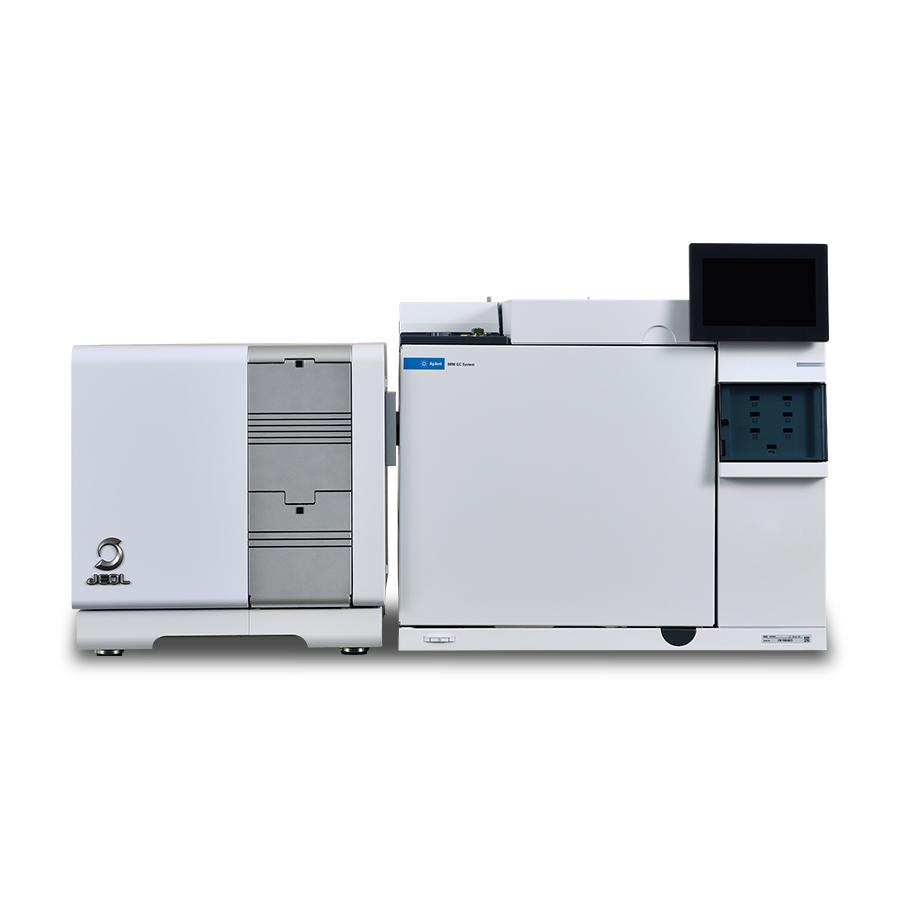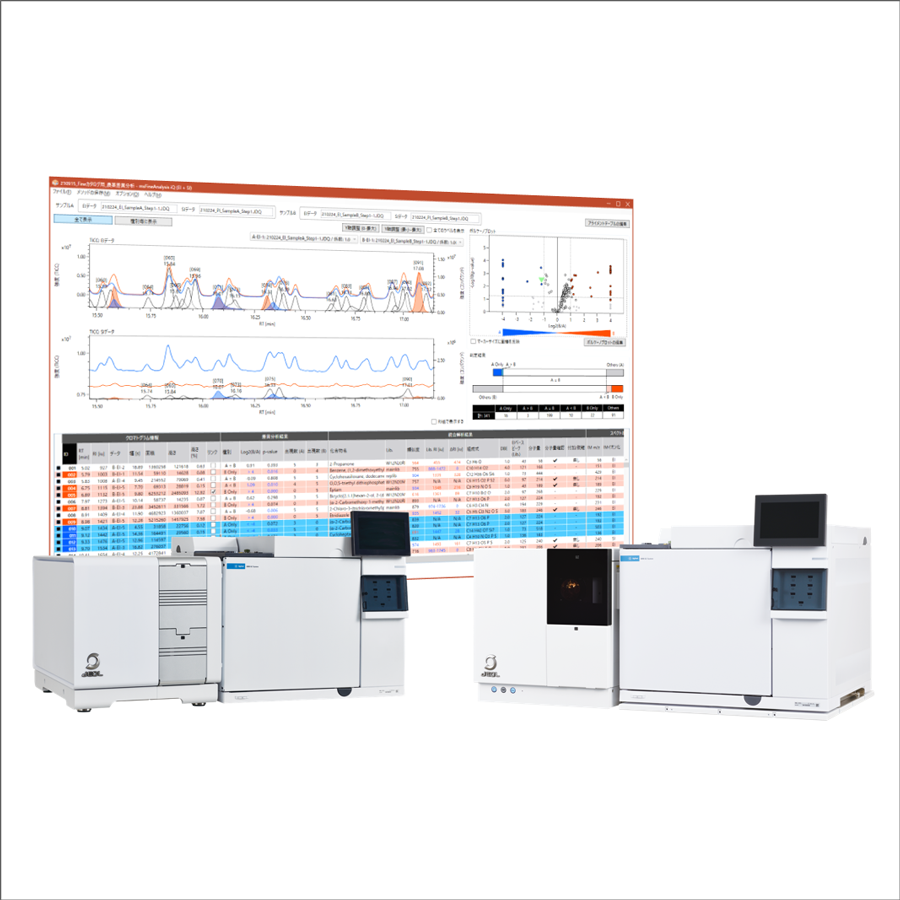Integrated qualitative analysis of fatty acid methyl esters (FAMEs) by msFineAnalysis iQ
MSTips No.358
Overview
Electron Ionization (EI) used in gas chromatograph / mass spectrometer is one of a hard ionization method which tends to generate fragment ions. Compounds can be identified by comparing the mass spectra acquired by EI with libraries. On the other hands, soft ionization such as photoionization (PI) is used to find the molecular ion. Comparing the molecular weights of the compounds identified in the library with the molecular ions enables highly accurate qualitative analysis. Therefore we have developed an integrated qualitative analysis software called msFineAnalysis iQ. Fatty acid methyl esters (FAMEs) are important compounds for measuring the amount of lipids in food, and are used as biodiesel fuels due to their low environmental impact. Numerous unsaturated compounds with a double bond in the alkyl chain are contained in FAMEs. As the number of the double bonds increases, it tends to become more difficult to detect their molecular ions by EI. Therefore FAMEs standard sample was measured by EI and PI to confirm the detection of molecular ions. We report the results of the integrated qualitative analysis combining library database search and molecular ion confirmation when performing msFineAnalysis iQ.
Results
Restek's 37 fatty acid methyl ester mixture standard reagent (2-6 wt/wt%, P/N: 35077) was used as the measurement sample. The measurement conditions are shown in Table 1. Fig.1 shows TICC of GC/EI and GC/PI. All of 37 components could be separated and detected using medium polarity column DB-23.
In PI mass spectra, each molecular ion of FAMEs with 3 or less double bonds in the alkyl group was observed remarkably, while the relative intensity decreased as the double bonds increased.
When the relative intensity of molecular ions is small, it becomes difficult to distinguish between ions and noise. But even in such cases, it was possible to search for molecular ions based on the library search results in integrated qualitative analysis.
As examples, Fig. 2 shows the mass spectra and the structural formulas of six components with 20 carbon atoms excluding ester bonds and 0 to 5 double bonds.
Table 1 Measurement condition
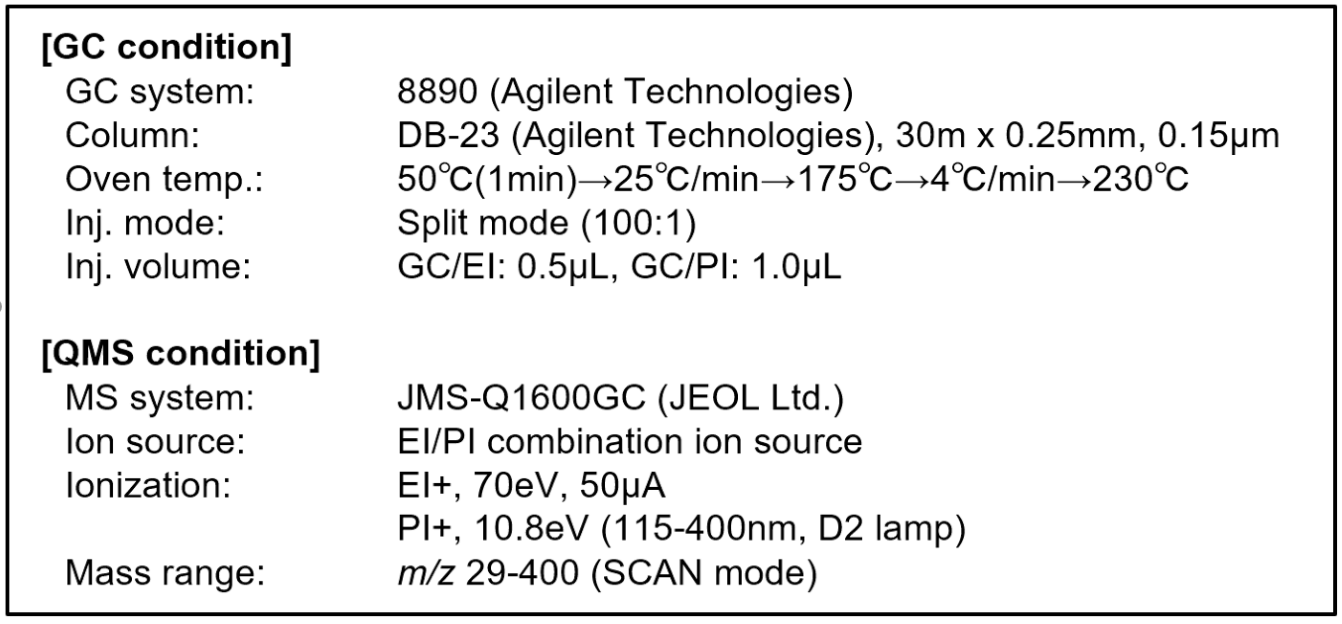
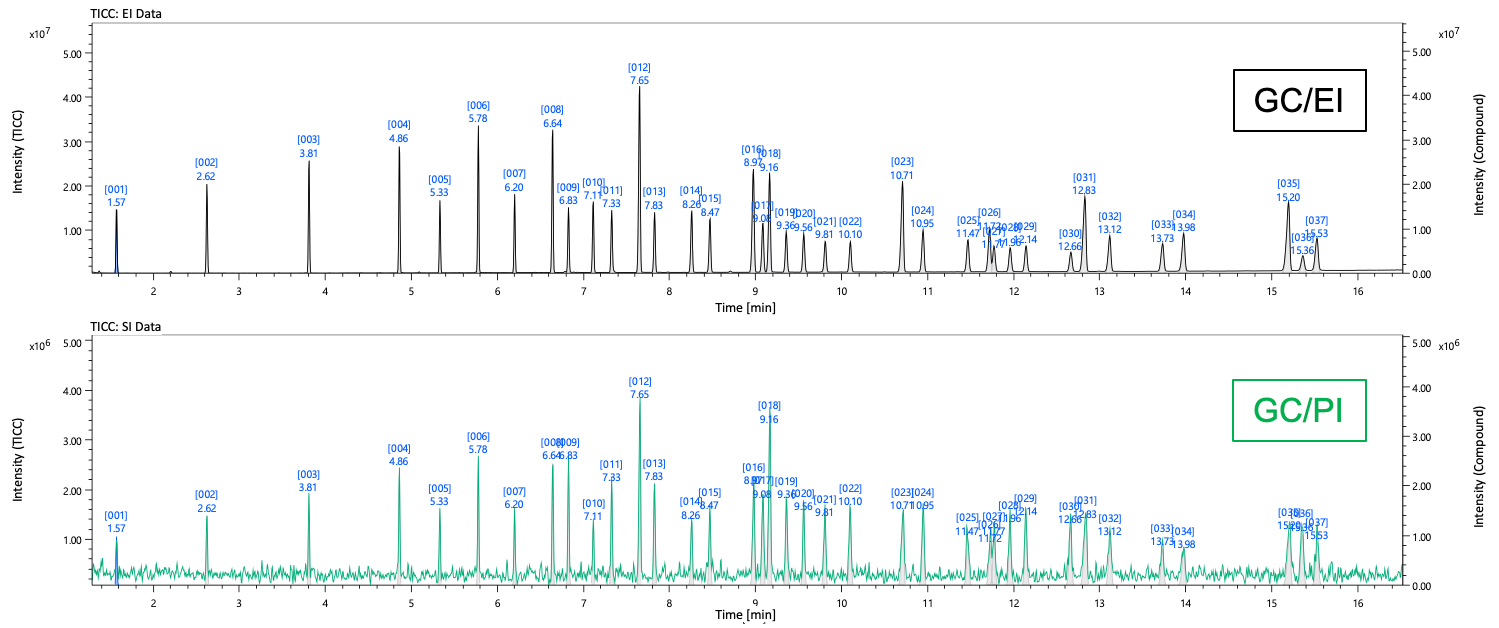
Fig.1 GC/EI and GC/PI total ion current chromatograms for the FAME 37 mix sample.
Table 2 Integrated qualitative analysis result using the msFineAnalysis iQ
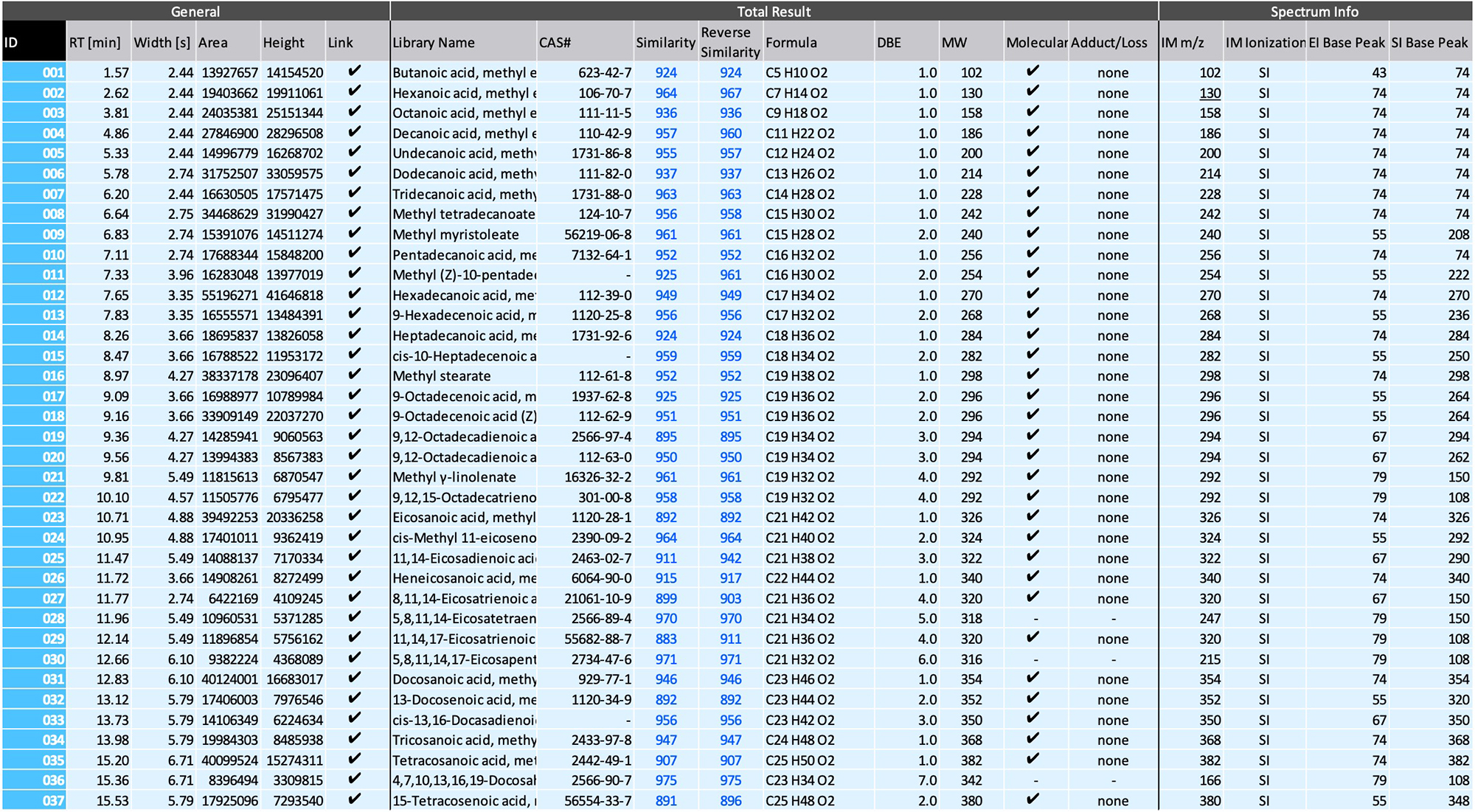
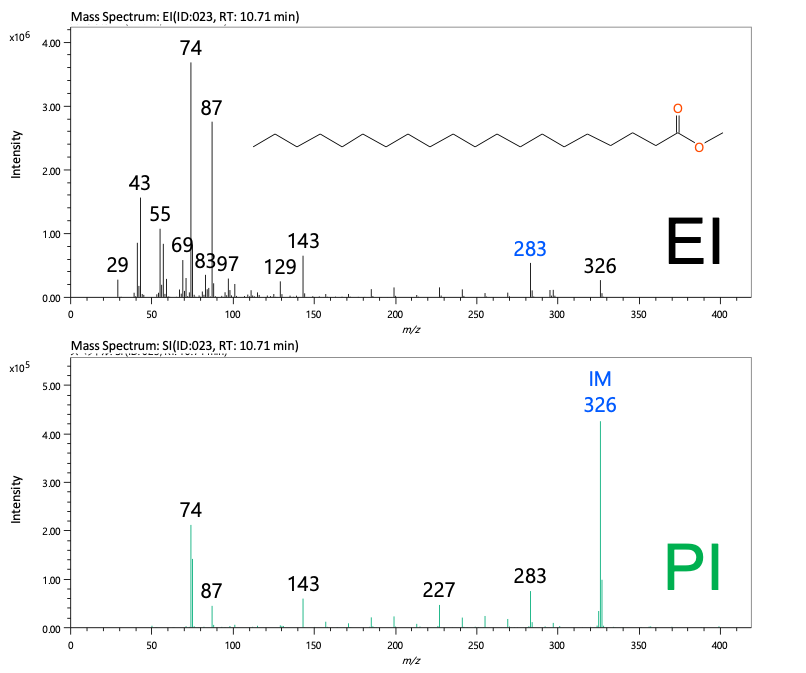
ID: 23, Eicosanoic acid, methyl ester (C20:0)
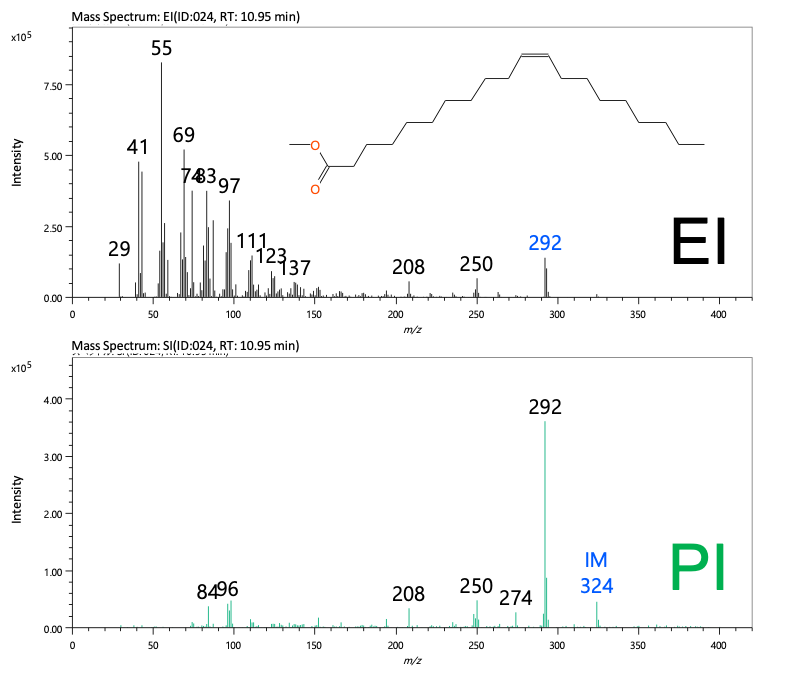
ID: 24, cis-Methyl 11-eicosenoate (C20:1n9)
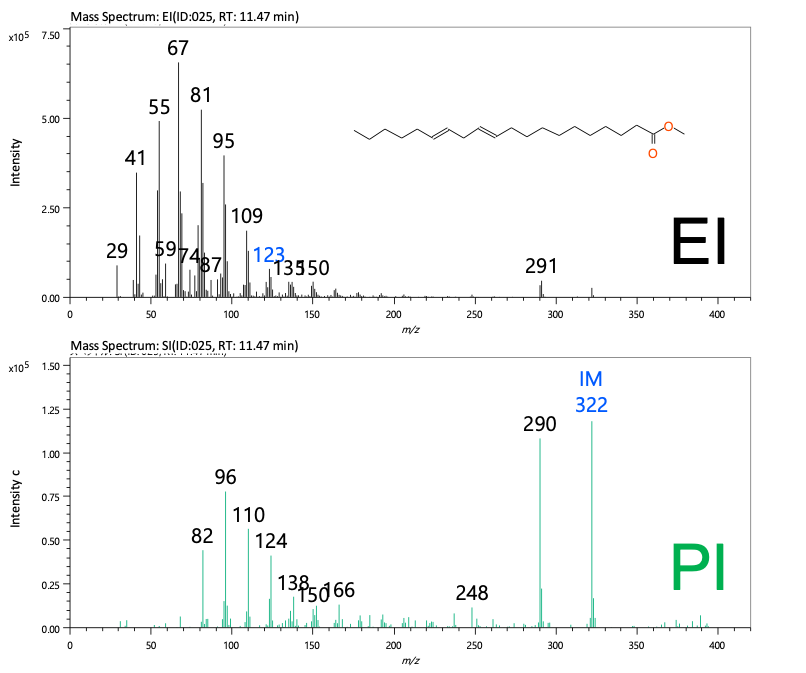
ID: 25, 11, 14-Eicosadienoic acid, methyl ester (C20:2n6)
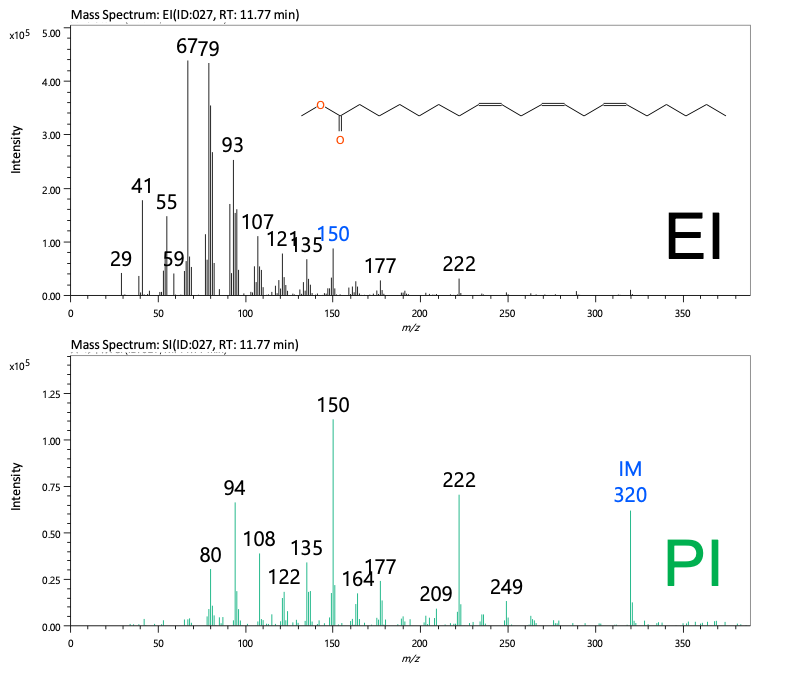
ID: 27, 8, 11, 14-Eicosatrienoic acid, methyl ester, (Z,Z,Z)-(C20:3n6)
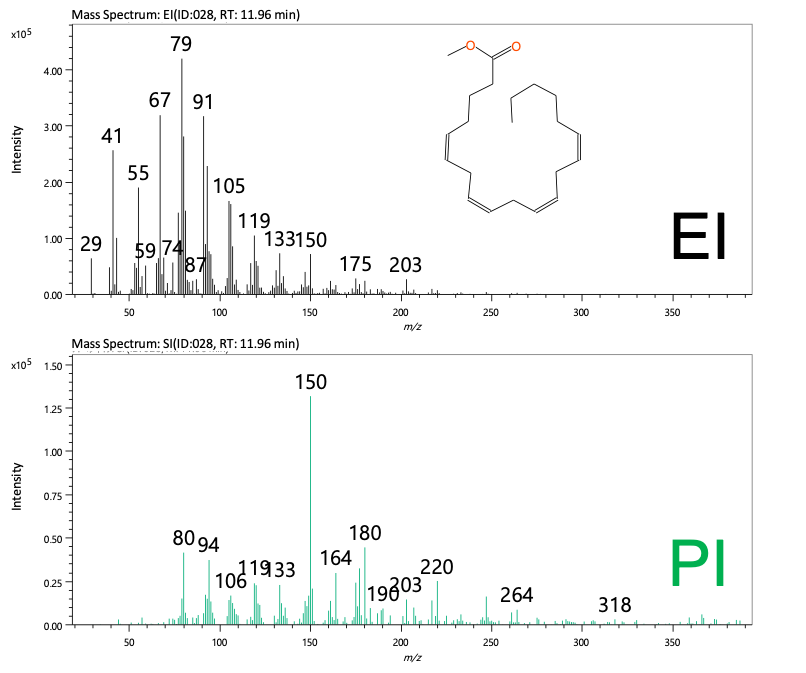
ID: 28, 5, 8, 11, 14-Eicosatetraenoic acid, methyl ester, (all-Z)- (C20:4n6)
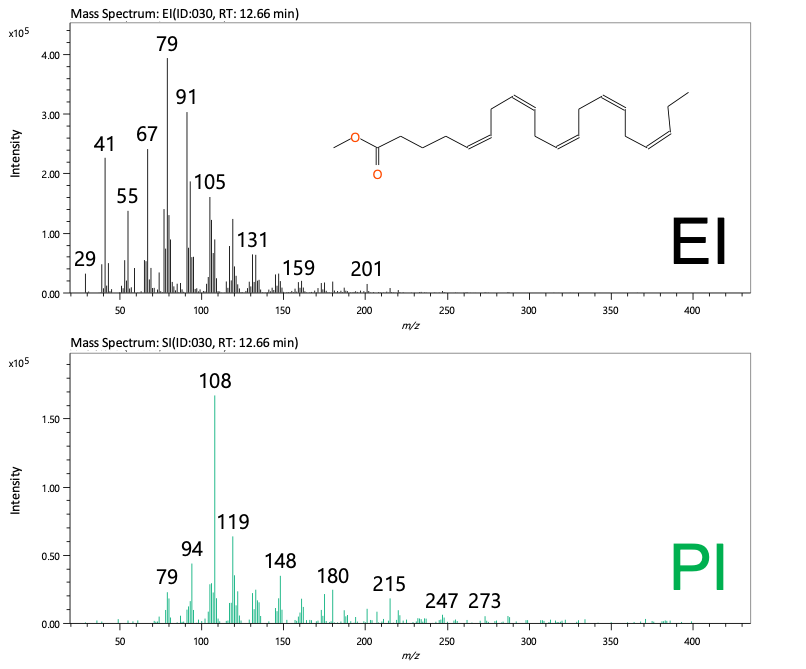
ID: 30, 5, 8, 11, 14, 17-Eicosapentaenoic acid, methyl ester, (all-Z)- (C20:5n3)
Fig.2 EI and PI mass spectra for C20 FAMEs.
Table 2 shows the integrated qualitative analysis result using msFineAnalysis iQ. We were able to improve the quality of the analysis results by the integrated qualitative analysis that combined the results of the library database search with the results of molecular ion confirmation.
Both the soft ionization such as PI and the integrated qualitative analysis using msFineAnalysis iQ were shown to be effective in the qualitative analysis of compounds such as FAME whose molecular ions are difficult to obtain by EI.
Solutions by field
Related products
Are you a medical professional or personnel engaged in medical care?
No
Please be reminded that these pages are not intended to provide the general public with information about the products.

